I am pretty new to the AngularUI Router and would like the use it for the following scenario:
The layout common to all pages includes a top navbar containing a menu with buttons on the right and a content section filling the space below. The page has several pages that I map to UI Router states (page1, page2, ...). Each page can have its own menu items and its own content. The menu needs to share the scope with the content since they interact (e.g. the save button submits the form in the content, it should only be enabled if the form is valid).

The HTML roughly looks like this:
<body>
<nav class="...">
<h1>my site</h1>
<div>MENU SHOULD GO HERE</div>
</nav>
<div class="row">
<div class="column ...">
CONTENT SHOULD GO HERE
</div>
</div>
</body>
Right now, I am using two parallel views and two controllers for each state. But this way, the two scopes/controllers cannot interact.
So how would you accomplish that?
